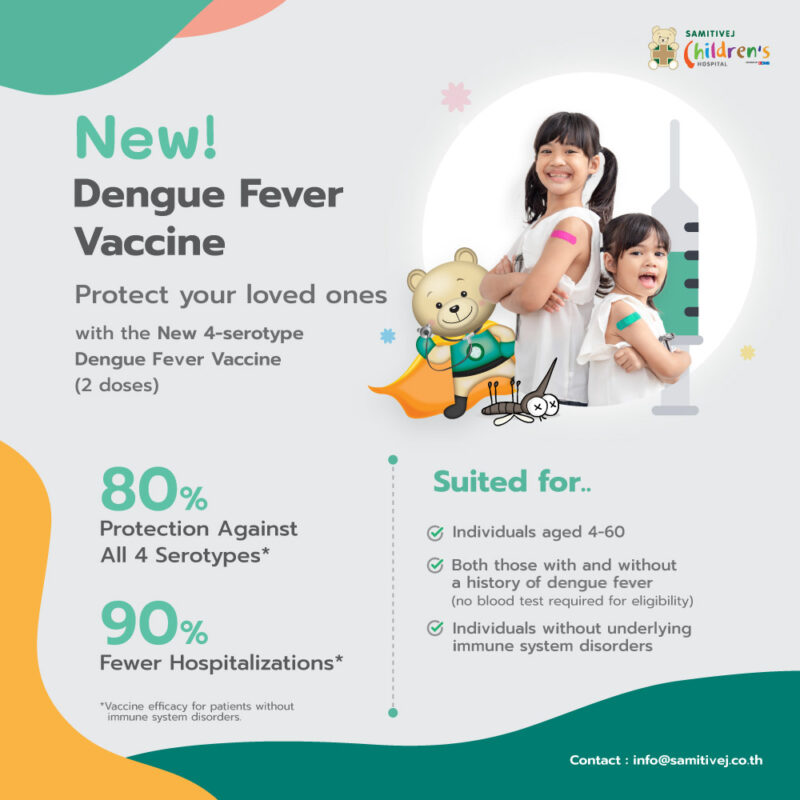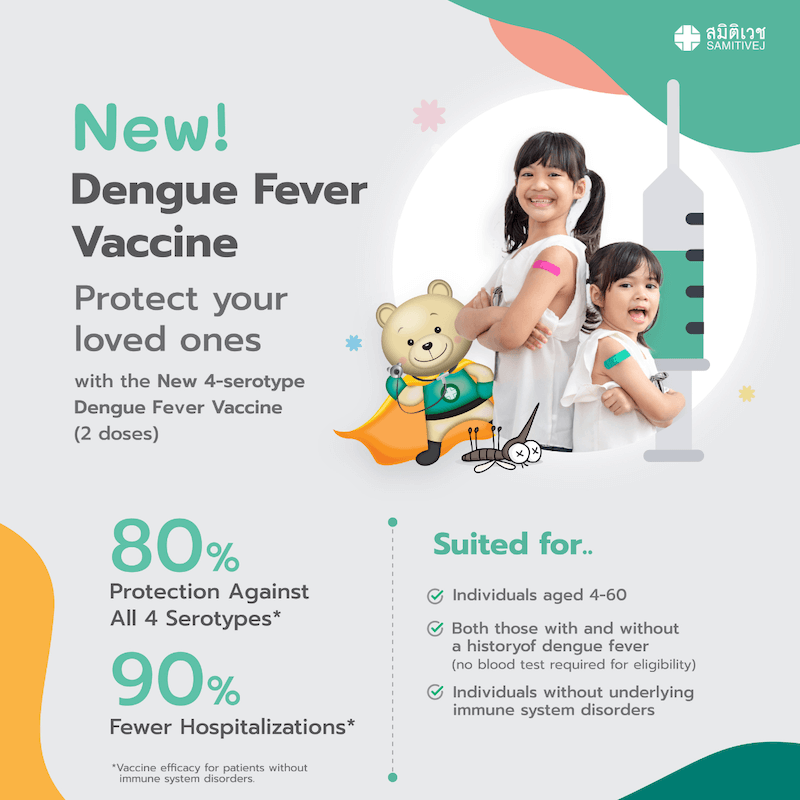Diabetes among children might seem like a nightmare for parents, but Dr Oranan Siwamogsatham, M.D. of Samitivej Hospital says it is growing and we need to learn that some lifestyle changes could help children lead normal lives.
Managing diabetes in children
Diabetes is a scary diagnosis that is unfortunately becoming more frequent all over the world. Across Asia, including Thailand. However, as I often tell parents, a diagnosis of diabetes need not spell despair.
Diabetes among children
There are two main types of diabetes, type 1 and type 2. Type 1 is where a child’s pancreas is unable to produce the insulin it needs to survive. This insulin then needs to be replaced through medication. It used to be known as juvenile diabetes because it is more common among children, though adults are also affected by type 1 diabetes. Type 2 diabetes is diagnosed when there is insulin resistance, and the body does not use insulin as it should — to carry glucose into the body’s cells so it can be converted into energy. The body thus needs more insulin and eventually, the pancreas cannot keep up.
There is no reliable method to predict type 1 diabetes. Most patients experience symptoms, which are then diagnosed as type 1 diabetes. Family history, pancreas-related injuries, diseases or infections are risk factors for this type of diabetes. Researchers are still trying to understand why type 1 diabetes is increasing since it is an auto-immune disease influenced by genetic and environmental factors. In comparison, type 2 diabetes is easier to predict as there are several risk factors including obesity, a sedentary lifestyle, a family history of the disease, and ethnic background. A patient can be diagnosed before symptoms appear by testing fasting blood glucose levels or performing an oral glucose tolerance test for patients who have any two risk factors. Screening can be done at the age of 10 or at the onset of puberty and should be repeated every two years.
In some cases, children can develop both type 1 and type 2 diabetes. This is called double diabetes. It occurs when a child with type 1 diabetes develops insulin resistance, which is the hallmark of type 2 diabetes. The most common reason for insulin resistance is obesity. Double diabetes can also occur in patients who, at first glance, appear to have the more common type 2 diabetes because they are overweight. However, a blood test shows the presence of auto antibodies that fight the pancreatic beta cell and are typical of type 1 diabetes.
Symptoms and complications
Early symptoms of diabetes in children include increased thirst, frequent urination, bedwetting although the child is toilet trained, extreme hunger, loss of weight, fatigue, and weakness. If undetected, these symptoms could then develop into nausea, vomiting, stomach ache, rapid heavy breathing, and drowsiness. This is called diabetic ketoacidosis, which is life threatening and requires immediate treatment.
Diabetes can cause short and long-term health complications. Sometimes, blood glucose levels become too low (hypoglycemia). This is usually the result of not eating enough and too much insulin or too much exercise. The signs and symptoms of low blood glucose include hunger, feeling shaky, sweaty, confusion, drowsiness, double vision, loss of consciousness, and seizures. This is a dangerous condition and needs to be treated quickly. Too high blood sugar (or hyperglycemia), occurs on eating too much, eating the wrong type of food, not taking enough insulin, or illness. It could lead to diabetic ketoacidosis.
Long-term complications associated with diabetes are linked to high blood sugar levels over a long period of time. This could affect the eyes, (cataract, retinopathy, and glaucoma), kidneys, heart (heart attack and stroke), nerves (neuropathy, tingling, numbness, loss of ability to feel pain or change in temperature, loss of bladder control, irregular heartbeats) and foot problems due to loss of feeling and poor blood circulation. Loss of sensation could result in injuries that will not heal easily. Teeth and gum problems are also common with infections. Maintaining appropriate blood sugar levels is thus critical and the doctor’s instructions should be followed.
Treatment and prevention
Unfortunately, diabetes has no cure; available treatment options can only help in disease management. Since type 1 diabetes is the result of the body’s inability to make insulin, treatment always involves taking insulin. As parents you will have to count carbohydrates in meals, monitor blood sugar, and ensure that your child is eating healthy food, getting regular exercise, and maintaining a healthy weight and BMI. With type 2 diabetes, which is the result of insulin resistance, treatment involves diet control, lifestyle modification, and taking medicines such as metformin to help the body respond to insulin more effectively.
Type 1 diabetes is not preventable, though breastfeeding is reported to help lower the likelihood of the disease. Since Vitamin D deficiency could lead to type 1 diabetes, ensure that your child’s diet includes oily fish like salmon and mackerel, milk and dairy products, and that your child spends 15-30 minutes in the sun at least thrice a week.
Type 2 diabetes can be prevented. So, as parents you can ensure that your child eats healthy food, avoids sugary foods and soda, gets adequate physical activity, watches less TV, and does not spend too much time on the computer. Since it can be diagnosed before symptoms appear, get your child screened if you can identify even two risk factors.
The aim of diabetes management in children is to ensure that they have normal social, physical, emotional and intellectual development. This is possible with effective diet control, adequate exercise, and lifestyle management.
For further information, please contact Samitivej International Children’s Hospital.














